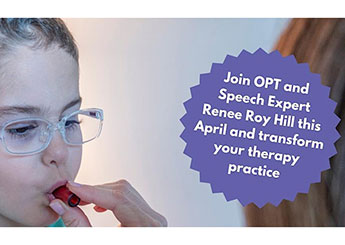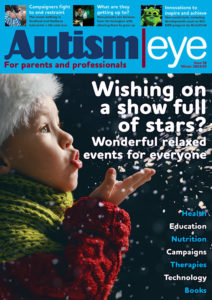
- This event has passed.

Motor Speech
Master Series
April 27, 2024 @ 10:00 am - April 28, 2024 @ 4:00 pm
£375Join Renee Roy Hill, developer of TalkTools Apraxia Kit, for this in-person training, providing invaluable knowledge to help develop speech.
We are very excited to host this in-person event featuring Renee Roy Hill. This is the first in-person TalkTools event in the UK for several years. The value of being in person cannot be underestimated when you are learning techniques to develop speech and improve articulation.
Renee Roy Hill is a speech and language pathologist with more than 19 years of professional experience.
Renee is a national and international lecturer and speaker for TalkTools Therapy, where she presents one and two-day courses on Oral Placement Therapy Techniques, Assessments, Program Plan Development and Apraxia. She is the author of the TalkTools Therapy ‘Apraxia Kit’ and the co-author of ‘Ice Sticks’ and numerous other TalkToolsTherapy Programmes.
Renee specializes in oral motor, feeding and motor speech disorders of clients with but not limited to the following diagnosis. She is certified as an Orofacial Myologist.
Tea/coffee and lunch provided on both days.
Day 1: Motor Speech Master Series: Identifying and Assessing
Historically, clinicians find it difficult to diagnose and treat speech disorders that fall under the umbrella of motor speech disorders particularly when a diagnostic incident has not occurred or the child with a single diagnosis.
Children with motor speech sound disorders include the client with Childhood Dysarthria (CD), Childhood Apraxia of Speech (CAS) and Oral-Motor Disorders (OMDs) fall into this category.
In Motor Speech 101, part of this multi-level class series, TalkTools Instructor Renee Roy Hill will discuss differential diagnosis of SSDs, particularly focusing on the characteristics of motor speech disorders that differentiate them from other developmental speech sound disorders such as a Phonological Disorder or Developmental Articulation Disorder.
This course will begin with a self-study to focus on defining motor speech disorders by function and characteristic, as well as looking at various assessment tools available to assist the clinician in identifying the correct diagnosis in speech. We will then begin to look at the client with a dual diagnosis and its implications. Treatment options currently used for CAS and CD will be explored to include what the research says, current recommended approaches and the criteria for choosing them.
The second part of Motor Speech 101 will introduce you to Renee Roy Hill’s Sensory-Motor Approach to working with clients who may not respond or are not yet ready for traditional approaches that focus solely on speech production.
This will include a deep look into the client with a dual diagnosis to include CAS, CD, OMDs, autism, Down Syndrome, CP and other disorders that may have a motor component to their functional problems in speech. Learners will begin with Renee’s Sensory-Motor Approach to assessment and the key components needed for identifying where to begin treatment, including:
- Key muscles for speech clarity
- Motor aspects of speech production and why we might start there
- Functional goals for motor speech therapy, focusing on speech production
This course will conclude by tying in OPT and Myofunctional techniques, along with the principles of motor learning, with a focus on speech production to develop a speech-focused programme plan for the client with a motor speech disorder or dual diagnosis.
Learning Outcomes
Participants will be able to:
- Define a Sensory-Motor Approach for Speech Clarity and who might benefit
- Understand when an alternative treatment approach is recommended and why
- Identify the 4 Domain Evaluation Process
- Discover how a Multi-Sensory Approach to shaping speech clarity can be effective for clients with dual diagnosis or persistent articulation errors
- Develop a framework for when to use a motor-based approach and why: Speech from a systems perspective: Dysarthria, CAS, Persistent articulation Errors, OMDs
- Learn the Muscle-Motor connection and specific bridging techniques to move from motor activity to speech (and the muscle link)
- Review strategies for working with clients who are pre-verbal or pre-imitation
Day 2: Motor Speech Master Series: Vocalization to Communication
Historically, clinicians are taught to develop speech by modelling (look at me, copy me). Most techniques, regardless of the diagnosis, rely on this method and many clients do well.
However, many students cannot make a change to speech with only auditory and visual cues. These clients with “oral placement disorders”, a term coined by Sara Rosenfeld-Johnson and Diane Bahr to describe the client who cannot make a change to speech using auditory and visual cuing alone, often struggle to make the progress we hope to see.
These clients may benefit from a multi-sensory approach, to include tactile input based on phonetic placement and motor learning theories. This class will discuss how and when a sensory-motor approach might benefit.
These principles and techniques can be applied to a variety of clients, including clients with Speech Sound Disorders (SSDs), as well as those with dual diagnosis (Oral-Motor Disorder (OMD) and apraxia, Dysarthria and Down Syndrome, Autism and Apraxia) to name a few.
Participants will learn how a stable motor system is key to speech development and the necessary underlying skills for each sound. Motor development will be reviewed and its place in assessment and treatment will be discussed.
The course will:
1) Review the underlying motor system as a pre-requisite to the standard production of speech sounds
2) Review OPT as a modern extension of phonetic placement theory
3) Learn a bottom-up approach to speech production – learn the systems
4) Teaching vocalizing on command
5) Teach a Sound Using a tool/tactile cue to facilitate speech motor planning
6) Phoneme Sequencing
7) Phoneme Blending
8) Syllables Blending
9) Syllable to Word
10) Addressing CAS
11) Addressing Dysarthria/OMDs
12) Addressing CAS
13) Discuss how this approach is intended as an adjunct to current therapy techniques.
Learning Outcomes:
- Define an Oral Placement Approach for Motor Speech Disorders.
- Identify the components of speech from a systems perspective.
- Understand the sensory system and its function in teaching speech.
- Learn how the motor system functions and its impact on teaching speech.
- Explore Sensory-Motor Techniques to teach a client to vocalize on command.
- Understand how bridging techniques are effective from OPT to speech.
- Develop a framework for when to use tactile phonetic placement techniques and how to fade them.
- Practice techniques for teaching a sound, sequencing, blending and transition to whole word.










